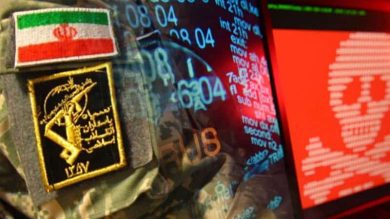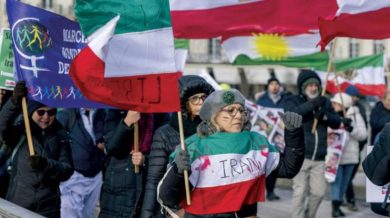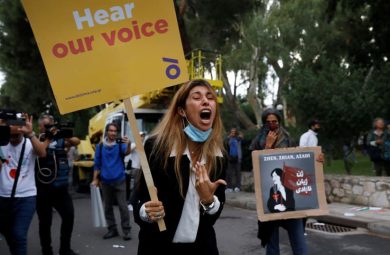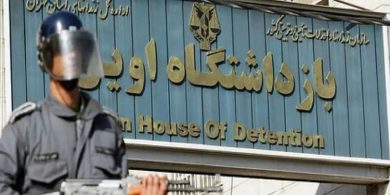Behind the stone walls of Iran’s most notorious prisons, beyond the reach of cameras and courts, thousands of Iranians languish in silence. They are students, poets, mothers, union leaders, teachers, environmentalists, artists, lawyers. Their crime? Speaking out, organizing, dreaming of freedom. Their captor? The Islamic Revolutionary Guard Corps (IRGC).
For decades, the IRGC has acted not just as a military arm of Iran’s theocracy but as its most fearsome tool of repression. At the heart of its power is a vast, secretive system of political imprisonment—a network of abductions, torture, sham trials, and indefinite detentions designed to crush dissent and silence resistance.
This article gives voice to the silenced. It documents the IRGC’s role in building Iran’s political prison system, the fates of those unjustly incarcerated, and the urgent need for international justice. These are the forgotten names of Iran’s struggle—but they must not be forgotten any longer.
1. The IRGC’s Political Prison Complex
While Iran has a Ministry of Intelligence and an official prison authority, the IRGC runs its own parallel justice system. Through its intelligence arm and affiliated judiciary figures, it arrests, interrogates, tries, and detains citizens—entirely outside the rule of law.
Key Features:
• Secret detention centers like Ward 2A in Evin Prison (run directly by IRGC Intelligence)
• “National security” charges used to detain peaceful dissidents
• Use of military tribunals for civilians
• Total immunity for interrogators and commanders
These prisons are where Iran’s democracy is buried—and where its hope continues to live.
2. Who Are the Political Prisoners?
The IRGC targets a broad spectrum of civil society:
A. Journalists
• Niloufar Hamedi and Elaheh Mohammadi: Jailed for reporting on Mahsa Amini’s death
• Narges Mohammadi: Human rights defender and Nobel laureate, repeatedly imprisoned for her writings and organizing
B. Women’s Rights Activists
• Nasrin Sotoudeh: Lawyer and defender of women arrested for unveiling
• Sepideh Qoliyan: Labor activist subjected to torture and rearrested for defiant protest
C. Students and Youth
• Teenage girls arrested for school-based protests
• University students detained en masse for attending demonstrations or organizing sit-ins
D. Ethnic Minorities
• Zahra Mohammadi: Kurdish language teacher imprisoned for “national security threats”
• Dozens of Baloch and Ahwazi activists detained and executed after secret trials
E. Environmentalists
• Kavous Seyed-Emami: Died under suspicious circumstances in Evin Prison
• Morad Tahbaz: Dual national held for years despite diplomatic pressure
Political prisoners are not terrorists. They are the conscience of a country—punished for refusing silence.
3. How They Are Arrested: Fear Without Due Process
IRGC political arrests often begin with:
• Home raids in the middle of the night
• Confiscation of phones and documents
• Blindfolding and solitary confinement
• No access to lawyers or families
Detainees may disappear for weeks or months, held incommunicado while interrogators attempt to extract forced confessions.
These practices violate:
• Iran’s own constitution
• International Covenant on Civil and Political Rights
• UN Convention Against Torture
But violations are the norm—not the exception.
4. Inside the Torture Chambers
Political prisoners under IRGC custody face systematic torture.
Documented Methods:
• Sleep deprivation and constant light exposure
• Beatings with cables and fists
• Waterboarding and hanging from ceilings
• Electric shocks to sensitive areas
• Sexual violence, including rape and threats of rape
• Mock executions
Psychological torture includes:
• Forcing detainees to witness other beatings
• Threatening family members
• Forcing false “confessions” on camera
These videos are later broadcast as propaganda—turning victims into trophies of the regime’s cruelty.
5. Sham Trials and Harsh Sentencing
After weeks or months of abuse, political prisoners are dragged into Iran’s so-called justice system—controlled heavily by IRGC-affiliated judges and prosecutors.
Common Characteristics:
• Trials often last less than 30 minutes
• Evidence is limited to “confessions” under torture
• No access to defense counsel
• Charges like “collusion,” “propaganda against the state,” or “corruption on earth”
Sentences range from:
• 5–15 years for activists, writers, students
• Death for protesters or perceived leaders
Some are released temporarily under surveillance—only to be re-arrested for further humiliation.
6. Women in IRGC Custody: Gendered Repression
Women face a unique form of violence in the IRGC’s political prison system.
Patterns:
• Strip searches and humiliation
• Denial of menstrual products and medical care
• Sexual abuse, rape, and forced virginity tests
• Threats of honor-based violence and shaming
Notable Cases:
• Armita Abbasi: Teenage protester reportedly raped in custody
• Yasaman Aryani, Monireh Arabshahi, and others jailed for opposing hijab laws
These abuses aim to break not only bodies—but identities.
7. Death in Detention: Silencing the Silenced
Many political prisoners never make it out alive.
Known Cases:
• Sina Ghanbari, Behnam Mahjoubi, Navid Afkari, Vahid Sayadi Nasiri: All died under suspicious circumstances in custody
• Mahsa Amini: Arrested by morality police and died from head trauma
• Dozens of Kurdish and Baloch detainees executed after sham trials
The IRGC often labels deaths as “suicide” or “natural causes”—despite overwhelming evidence of abuse.
8. Impact on Families: Collective Punishment
The IRGC targets not only prisoners—but their families.
Repercussions Include:
• Surveillance and interrogation of parents and siblings
• Firing family members from public jobs
• Denial of burial rights or withholding bodies
• Arrest of mothers who demand justice (e.g., Mothers for Justice movement)
This form of collective punishment spreads fear and prevents public mourning or mobilization.
9. International Silence and Inaction
Despite growing documentation of IRGC prison abuse, international accountability has been limited.
Failures Include:
• UN General Assembly resolutions with no enforcement
• European governments prioritizing nuclear talks over human rights
• Lack of universal jurisdiction trials for IRGC torture
• Inadequate asylum policies for former prisoners or at-risk families
This silence enables impunity—and prolongs the suffering of the imprisoned.
10. Pathways to Justice and Liberation
Justice for IRGC political prisoners must be comprehensive, survivor-centered, and global.
What Must Be Done:
A. International Action
• Full terrorist designation of the IRGC by all democratic states
• Global Magnitsky sanctions on judges, interrogators, and prison officials
• Creation of a UN Special Tribunal or referral to the International Criminal Court
• Universal jurisdiction cases in European courts based on torture evidence
B. Diaspora and Civil Society
• Amplify prisoner stories through media and art
• Provide legal and psychological support to families
• Lobby for prisoner releases and diplomatic pressure
C. Iran’s Future
• Truth commissions to document decades of political imprisonment
• Reparations and memorials for victims
• Prosecution of those responsible for systemic abuse
Justice must be both backward-looking (accountability) and forward-looking (non-recurrence).
Conclusion: From Forgotten to Remembered
The political prisoners of the IRGC are not statistics.
They are poets whose verses were burned.
Students whose futures were stolen.
Daughters whose names became hashtags.
Sons whose graves are unmarked.
But they are also the seed of Iran’s rebirth—the proof that truth survives torture, and that dignity can outlast a dungeon.
To speak their names is not enough.
Join Our Newsletter!
Stay informed with the latest updates, news, and ways to take action in the fight for justice and global security. Sign up now to get updates delivered straight to your inbox!





